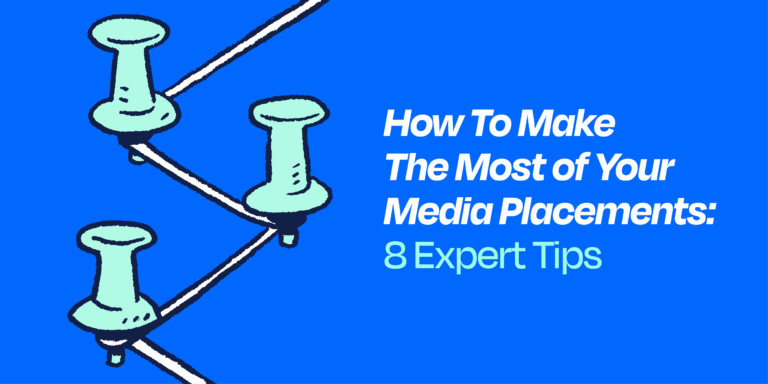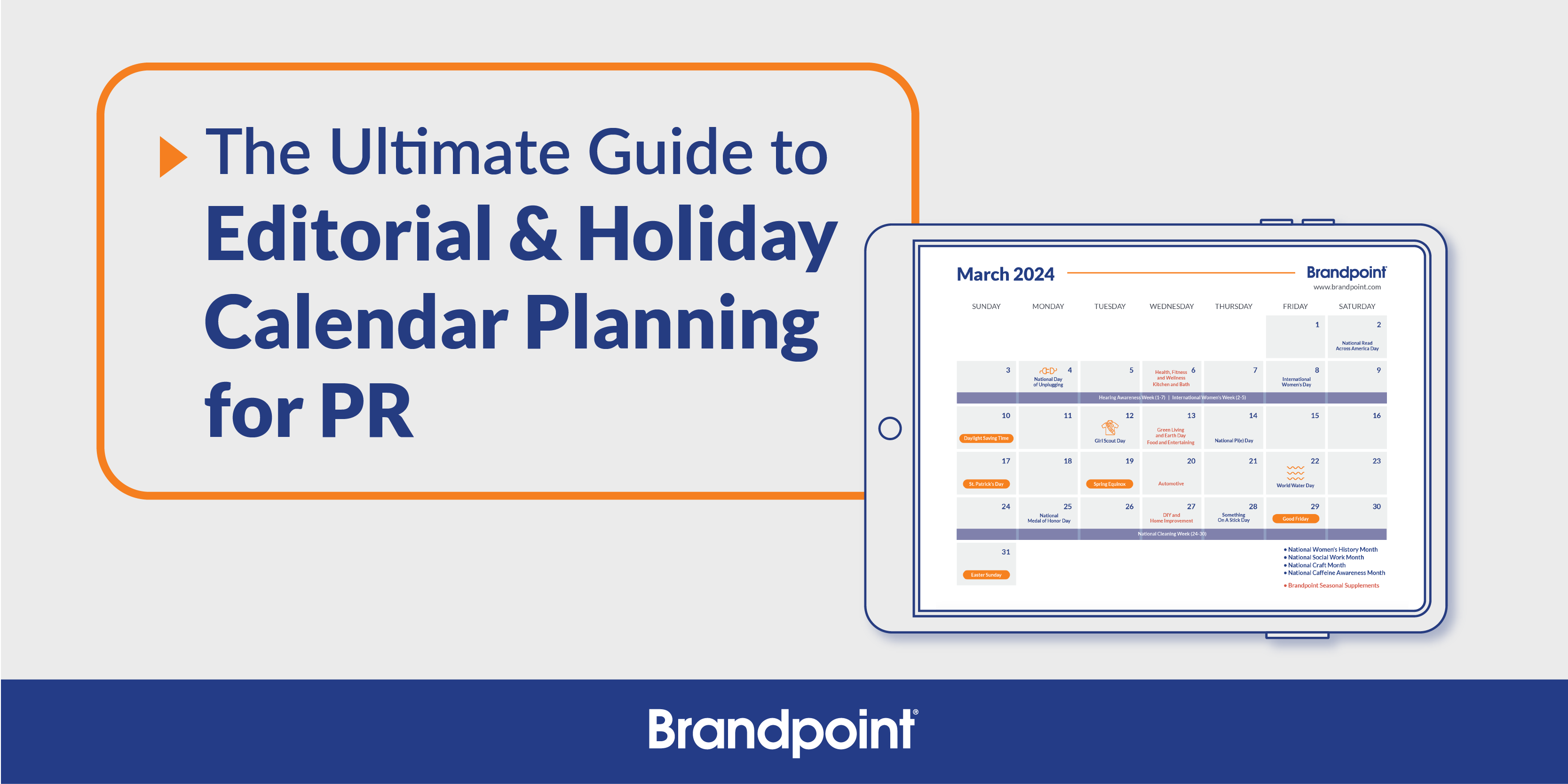The healthcare industry has been one of the last to adopt content marketing. If you’re in the industry, then you know it’s difficult to produce creative content due to stringent FDA requirements, extensive important safety information (ISI) and lengthy legal reviews.
Though this industry is hesitant to jump on the content marketing bandwagon, one solution has acted as the gateway to developing more content: the MAT release.
The MAT release is a type of Guaranteed Media Placement. It’s a feature article targeted at print and digital newspaper audiences. Editors use them to supplement staff-written stories and they have the ability to reach a ton of people. (We’re talkin’ millions — Brandpoint Media Placements have an average site audience of 125 million.)
In this post, we’ll explain why MAT releases are an ideal content marketing tactic for doubtful brands and how to write a successful one — all while following the required guidelines.
[RELATED: 2018 Social Media Trends for Healthcare and Pharma Companies]
How MAT releases support the healthcare industry
Pharma companies often face the challenge of combating negative press. Though the media reports heavily on drug price increases and shady industry practices, Content Marketing Institute states, “The reality is that they only represent a very small percentage of drugs and health services providers in the United States.”
To counter these messages, brands must take charge of their image to establish trust and authority with their audience. Buddy Scalera, a content strategist at the Medicine Company, believes that “… content marketing holds a tremendous potential to chip away at the divides that exist between the business and its audiences — along with plenty of opportunities to creatively connect in impactful, measurable ways.” (Source: CMI)
Because many healthcare companies have yet to publish content, Jordan Teicher for the Content Strategist states that “Pharma marketers have a huge opportunity to stand out while staying true to consumers.” However, that content often isn’t consumer-friendly.
“Most major drug companies run social media accounts, filling them with perfunctory posts about corporate news or events that don’t give much value to the consumer. Some brands have blogs, but those tend to suffer from bland design and dry writing,” says Teicher.
If your marketing team doesn’t have the resources or capacity to generate a content marketing strategy or maintain owned channels, then paid media solutions may be the best way to reach consumers with content.
Paid media solutions usually take one of these forms:
- Native advertising: Recommendation widgets (also called discovery platforms) like Taboola or StackAdapt, paid search ads like Google AdWords, or in-feed ads.
- Sponsored content: Branded content such as an article or video that lives on a media publisher’s website. A MAT release is a form of sponsored content.
Beginning a content marketing practice with one of these solutions means that only one piece of content needs to be produced. You can even use the same piece of content in multiple ways. For example, you may use a MAT release article as a piece of content in a recommendation widget.
[FREE EBOOK: 13 How-to Strategies For Mastering the Modern MAT Release]
These solutions are a less intimidating way to begin experimenting with what content development methods work best for your marketing team.
As a featured article placed on a publisher’s website, a MAT release is considered a piece of sponsored branded content. It’s a good solution for brands that want to reach a large newspaper audience and connect with consumers without feeling hindered by legal restrictions.
For a better chance for your health-related article to get placed, there are a few key best practices for writing a health-related media placement.
1. Tell a patient’s story
Guaranteed Media Placements are helping brands that have historically been bogged down with legal red tape to use their most compelling asset: patient stories.
One of the most powerful stories a healthcare brand can tell is about a person with a specific malady that a brand’s products or services helped alleviate. In a study by Kantar Media, 47 percent of patients said reading stories online from fellow patients made them feel better about their own treatment. (Source: PharmExec)
Start by building your story around a likable protagonist. Ideally, your article will focus on a person who has participated in your clinical trial or benefited from your procedure or medication in some way.
Find that person and tell the patient’s entire journey, starting with the appearance of their first symptoms. This not only makes the person more relatable to readers, but it also provides knowledge that may alert others experiencing the same early symptoms.
If a patient isn’t available, you can focus your story on a doctor or other healthcare professional, but the patient should be your top priority whenever possible.
You can also find someone who can write from a first-person point of view about their diagnosis and struggles.
As you’re finding and creating these stories, don’t focus on how you can mention your brand in your Media Placement. Instead, focus on telling genuine, helpful stories.
2. Educate readers
What is your brand an expert on? Whatever that topic is, writing about it in a useful way will show readers that you’re an authority in the industry.
It could be as simple as writing about the symptoms and warning signs of a disease. Or you could share recipes with nutrients that help ease the symptoms of a condition related to your brand.
Start a conversation
Some healthcare brands have not only educated readers through their content, but they’ve also raised awareness and encouraged discussions about taboo but important health-related topics.
To support its flagship birth control products, Pharma company Allergan launched the #ActuallySheCan platform to engage millennials in a discussion about women’s health and contraception. The focus of the content isn’t on advertising the pill. Rather, the content educates the brand’s target audience on general health issues related to millennial women.
Get expert advice
Though professional writers and journalists are excellent choices for writing educational content for your audience, research and advice from experts enhance its authority.
To that end, recruit the help of an expert such as a researcher or doctor. Advice coming from knowledgeable, trained sources boosts the credibility and trustworthiness of your brand. Plus, if your brand is an organization that consists of doctors and other medical professionals, it’s a time to show off their skills and expertise without explicitly promoting your brand.
[PRO TIP: Including experts in your content increases its authority, which could cause your content to rank higher in search results.]
If you recruit an expert, remember that it’s OK to edit their responses to make it easier for a consumer audience to understand. Keep in mind that you’re writing for consumers who may not be familiar with medical terminology.
3. Avoid complicated jargon and sales speak
As mentioned above, it’s easy for healthcare content to be confusing for consumers who aren’t familiar with your field. Avoid this by having an editor read your content to catch words or phrases that a consumer may need defined.
Working with a professional freelance writer or editor outside of the medical industry will also help with avoiding complicated jargon and incorporating a better consumer perspective.
Put consumers first
Including too much sales speak or explicitly selling your products or services could annoy readers and be unhelpful if they’re not currently looking to purchase.
Avoiding sales-y language not only makes it easier for consumers to read, but they will be more likely to stay on your page and browse more pages on your site. This boosts dwell time and decreases the bounce rate, which will improve the SEO value of your site.
Focus on writing content that will help consumers solve their problems. They don’t care about your product or service as much as they care about finding help.
Your product might be the perfect solution, but a genuine connection through your content will resonate more than a dry product ad. A CTA at the bottom of a MAT release, such as “learn more,” or “get a free trial,” is the best place to mention your brand’s product or service. In most cases, it will be the only time a brand is mentioned.
4. Visualize your article
Break down complicated medical concepts or research by displaying them in a visual format, such as an infographic.
Infographics marry fascinating data and statistics with eye-pleasing design. They make it easy for readers to quickly digest a message, learn something and even have fun along the way.
Successful infographics are organized to smoothly guide readers from start to finish, like a story. Organization methods include chronological, alphabetical, categorical, hierarchical and geographical.
Marketers in the healthcare and pharma industry can use infographics to turn complex, sometimes dull data into something interesting and educational. Don’t be afraid to get creative with the design by incorporating a theme that can include graphic images, icons, shapes, bright colors and other elements to encourage consumers to check out the infographic.
Especially when using an infographic to demonstrate research, include visuals of charts and graphs to help consumers spot the most important stats and information. This infographic about bariatric surgery successfully combines all of these elements. (BONUS: Necessary regulated copy is included at the bottom, but only takes up a small portion of the infographic.)
[Brandpoint’s team of professional graphic designers can create your infographic and we’ll distribute it to our publishing network, averaging 500 placements and a reach of 125 million.]
5. Understand compliance restrictions
This is the part of content marketing that tends to hold healthcare brands back. Here are a few tips on working with compliance departments, provided by Brandpoint Senior Writer Chris Schafer, who is no stranger to writing regulated content.
- Stick to approved writing guidelines and language. You may also be able to view examples of content that the compliance team has already approved. These resources will give you a better idea of what you can and cannot say.
- Watch for absolute statements. Often, compliance departments don’t like strong assertions or guarantees. For example, the sentence “Eating this will ensure you never have a heart attack” is more compliant if edited to read, “Eating this may reduce the chances of a heart attack.”
- Keep track of all the sources you use, whether it’s a web link or the contact information of an expert you interviewed. Compliance may ask where the information in an article came from. By documenting every source, you’ll be able to quickly provide the information and speed up the compliance process.
- Avoid making even the slightest changes to copy that compliance has approved. This is considered the final version. However, if you identify significant grammar or other mistakes, it’s worth fixing and submitting for another compliance review.
Remember that compliance review can take a significant amount of time to complete. Factor this time into your editorial calendar so the content is ready when you need it.
Though this process seems tedious, it’s important to avoid legal issues. ISI, FDA and other required copy must be present in the article, whether at the end of an article or hyperlinked. But it doesn’t have to keep you from producing an attention-grabbing story.
Distributing pharma content
Compelling copy isn’t meaningful for a brand if it’s not seen by consumers. Brandpoint’s pharma Guaranteed Media Placements network ensures all of your article’s necessary formatting and symbols will appear just as they did during a compliance review.
Recently, we expanded the distribution network for pharma-related content. Pharma MAT releases, listicles and branded videos have now increased to an average of 1,000 placements and an expected audience of 125 million. Infographics have increased to an average of 500 placements and an expected audience of 115 million.






